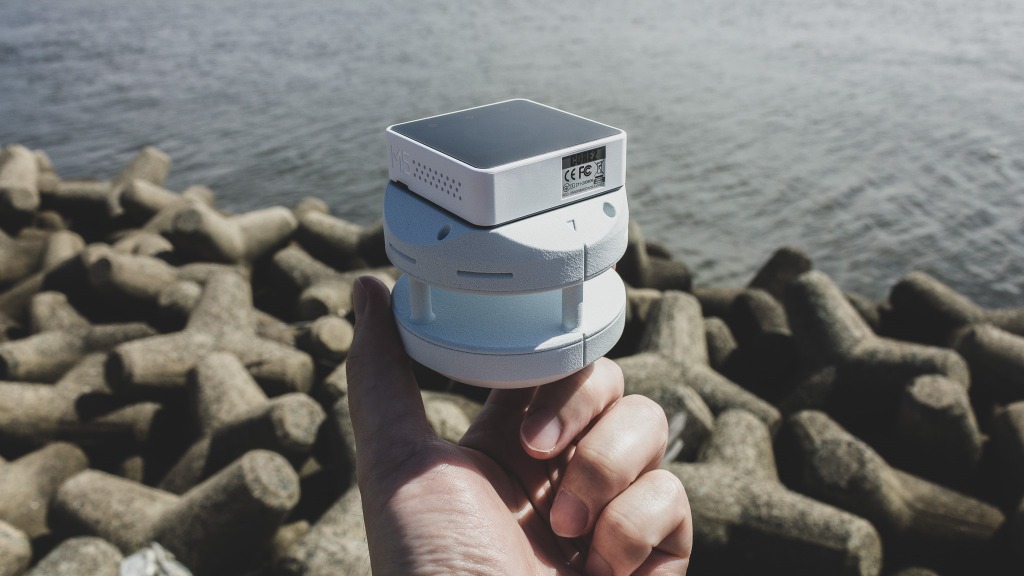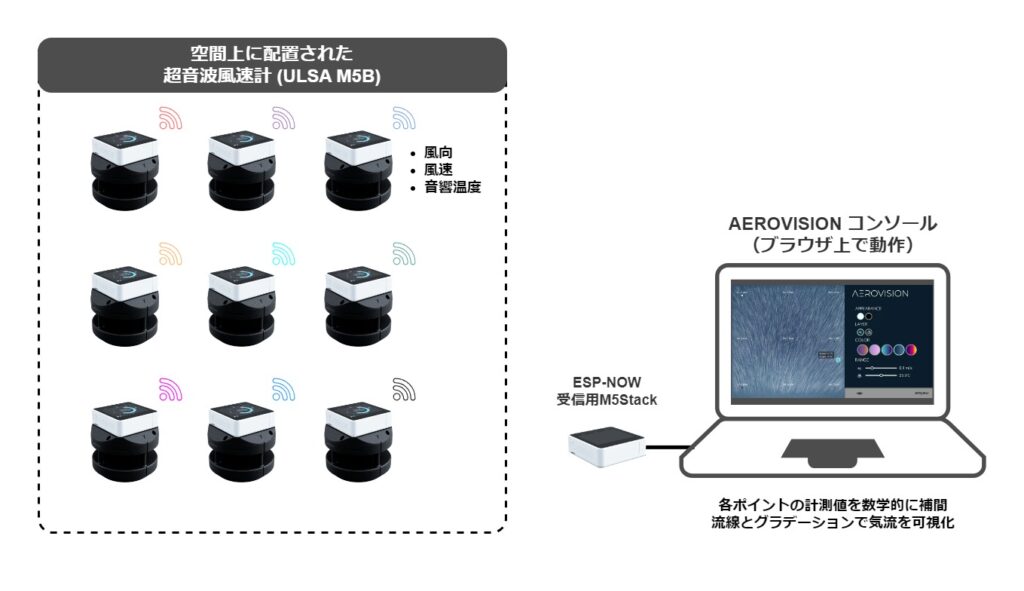We have developed and unveiled AEROVISION, a system that visualizes fine indoor airflows (wind strength and direction) in real-time. This system has also been submitted to the original hardware contest GUGEN2023.
At the original hardware contest GUGEN, the judging is based on factors such as the number of clicks on the "Want it" button. If you think this system is "great," we would appreciate it if you could click the "Want it" button!
Index
Purpose of the System
The core technology of this system, the ultrasonic anemometer, began full-scale development at the end of 2021, with online sales starting in late 2022. However, the field of "measuring wind" is quite niche even within the measurement domain, and effectively conveying the features and value of ultrasonic anemometers without moving parts, unlike traditional anemometers, proved to be challenging when using standalone hardware.

To help more people understand what an ultrasonic anemometer is and how it compares to conventional ones, we concluded that an intuitive "system" or "visualization" capable of solving social issues would be essential.
Based on this background, we decided to build AEROVISION as a "system for real-time visualization of spatial airflow," a theme that maximizes the features of ultrasonic anemometers while addressing current social issues.
System Overview
AEROVISION is a system composed of nine ULSA M5B ultrasonic anemometers and a PC that visualizes the airflow.

Airflow Measurement
The airflow measurement uses the ULSA M5B ultrasonic anemometer developed by Stratovision, enabling the measurement of fine airflows that traditional anemometers cannot capture.
Additionally, the ULSA M5B allows direct stacking of the IoT module "M5Stack Core2" on top of its housing, enabling standalone operation at each measurement point by providing battery power and wireless communication capabilities. The 2.4GHz ESP-NOW protocol is used for wireless communication, transmitting wind direction, wind speed, and acoustic temperature* data 10 times per second. This allows the system to respond quickly to sudden changes in airflow.
*Temperature derived from the speed of sound. Unlike traditional thermometers, which take time to detect temperature, ultrasonic measurements can instantly measure temperature.
AEROVISION Console (PC)
Data transmitted from the nine ULSA M5B ultrasonic anemometers is received via an M5Stack Core2 for ESP-NOW reception, connected to a PC via USB.
The application is implemented using p5.js, which operates in the browser, and connects to the M5Stack Core2 for ESP-NOW reception via the Web Serial API, enabling cross-platform functionality.
Wind direction and wind speed values obtained at each point are drawn with streamlines and gradients. A smooth rendering is achieved by mathematically linearly interpolating wind direction and speed between points*. In addition to the measured values at each point, interpolated wind direction and speed can be displayed as labels when hovering the mouse over the screen.
*This does not involve fluid calculations or simulations using the Navier–Stokes equations.
High-performance rendering is required, necessitating the use of high-spec PCs such as gaming laptops (the demo video PC's GPU: NVIDIA RTX3050 laptop). Optimizing the rendering can make it possible to operate on PCs with general specifications.
Expected Applications
AEROVISION is a demonstration of the ultrasonic anemometer ULSA and is not currently planned for commercial sale. However, it can be utilized in the following scenarios:
- Ventilation design in crowded spaces: Hospitals, schools, offices, etc.
- Use in industrial facilities: Factories, clean rooms, greenhouse cultivation, etc.
The required performance varies significantly depending on the structure of the target space and the scale of airflow being monitored. While AEROVISION may not be effective in all scenarios, it is particularly useful for understanding the overall airflow trends in a space in real-time.
For an example that demonstrates the system's capabilities, human skin can detect very subtle changes in airflow, but accurately sensing wind direction is usually difficult. AEROVISION can detect such subtle airflows that are at the limit of human skin sensitivity.
In Conclusion
We developed AEROVISION to showcase the potential of ultrasonic anemometers. Although it is currently positioned as a prototype and no validation experiments have been conducted, we plan to exhibit it at upcoming trade shows. We hope to gather feedback and consider ways to utilize the system.
